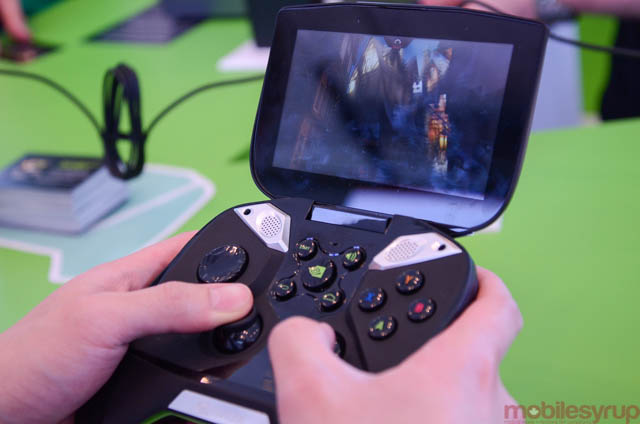
I/O is a place not just for Google to show off its newest wares but for partner companies to engage in dialogue with developers, press and fans. One of the most intriguing examples of this intersection is Nvidia’s upcoming Shield gaming thing. Not quite a portable video game system, not quite an Android media device, Shield is more like a developer demo machine with a gamepad affixed to it.
It’s also extremely intriguing, both from a consumer perspective and, here at I/O, a developer one. There are so many reasons to be excited about Android gaming, and with the Tegra 4 it appears that Nvidia is taking the prospect as seriously as it can.
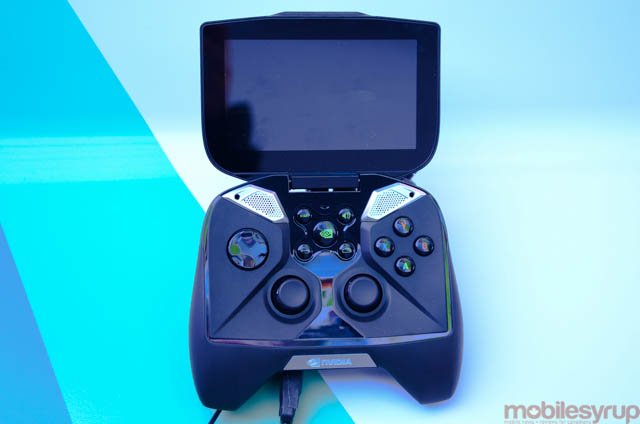
First, the specs: the device runs a quad-core Tegra 4 SoC and 2GB of RAM, the former of which boasts enormous performance improvements over its predecessor and, in terms of GPU speed, the rest of the market. There’s a 5-inch 720p multitouch display, though most of your gaming will be performed by the extremely well-built gamepad.
If you’ve used the Xbox 360 controller, you’ll be quite at home here. There’s a fairly shallow, responsive D-pad nub on the left; dual analog controllers below, well spaced for ideal movement; four action buttons (X/Y/B/A); two shoulder triggers and two shoulder bumpers; and five multi-function buttons on the front, including standard Android home and back buttons.
There’s also a microSD slot for expandable storage and an HDMI out for hooking up to a projector or television. The microSD slot is likely necessary, as the Shield comes with just 16GB of internal storage.
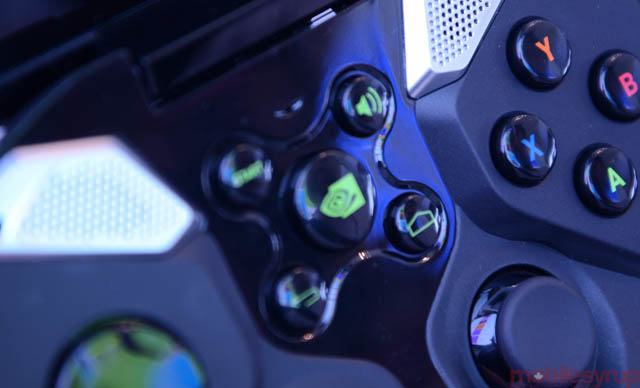
The front-facing speakers are impressively loud, and should suffice for some home play, though they’re not quite sufficiently-sized to fill up a room. The screen closes with a nice snap, and the whole system appears well-built and durable. It’s big, though: this is not going to fit in a pocket, pants or jacket, and it’s quite a bit larger than the PlayStation Vita, at least in terms of thickness.
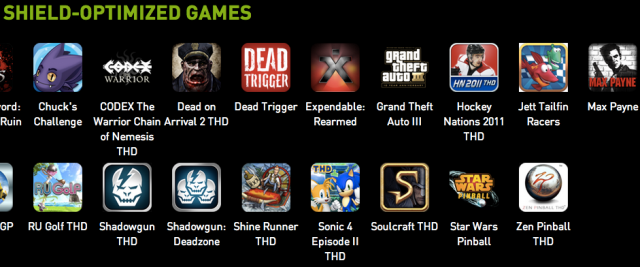
It’s also going to be interesting to see how Nvidia works with developers on bringing controller support to popular games, both current and future releases. Sony struggled to make the case to developers back when its compelling Xperia Play device was released, but the Android ecosystem is a very different beast today than it was in 2011. Not only is the Shield’s hardware some of the fastest available on the market — Tegra 4 promises to compete with Qualcomm’s upcoming Adreno 330 GPU — but it is working with mainstream game creators to implement gamepad support.
One of the more intriguing aspects of the Shield is called PC Play, where you can stream select PC games from your computer to the controller. This works with many of Nvidia’s Kepler-based PC GPUs, and relies on an ultra-fast WiFi connection for low-latency performance. Some of the launch games that support PC Play are Borderlands 2, Batman: Arkham City, Left for Dead 2 and Portal 2. This may be one of the best reasons to choose the Shield over a PS Vita, but we remain skeptical of the long-term practicality of streaming gaming.
With an array of sensors and chips such as high-speed 2×2 MIMO WiFi, 3-axis gyroscope and accelerometer, GPS, Bluetooth and more, the Shield should work as a media consumption tool, too. It runs stock Android 4.2.1 and is preloaded with a few games and apps, but the important thing is that it is Google-certified, and is preloaded with Google Play and TegraZone, so Netflix is as accessible as the average Angry Birds game.
It’s only slightly awkward to play touchscreen-only games on the device, too, since the device is weighted more towards the controller, so one hand is often needed to keep the Shield steady when touching the screen. A modular approach may have been prudent when designing the Shield, but that likely would have limited its long-term durability.
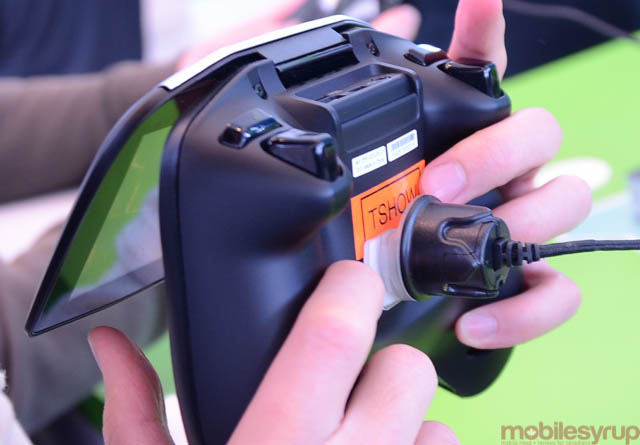
Shield will be available in June for $350, and will be sold in Canada by Canada Computers, which operates mainly in Ontario and Quebec, but ships all over the country. It remains to be seen whether the price, which is higher than the equivalent PlayStation Vita.
For more information, check out Nvidia’s Shield portal.
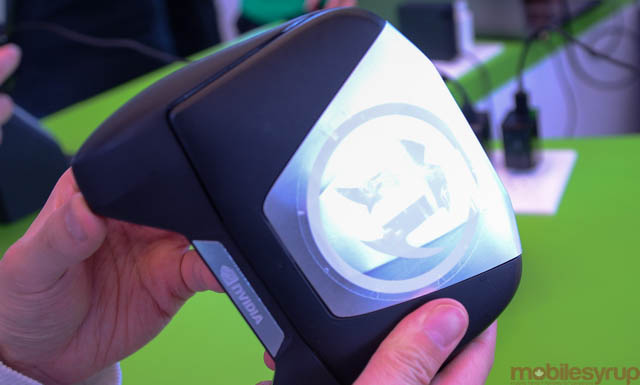
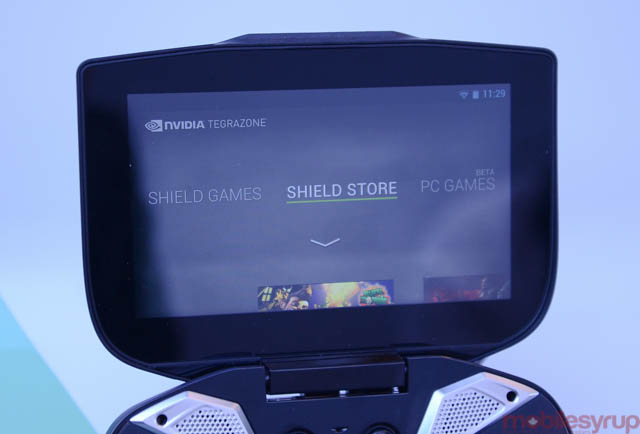
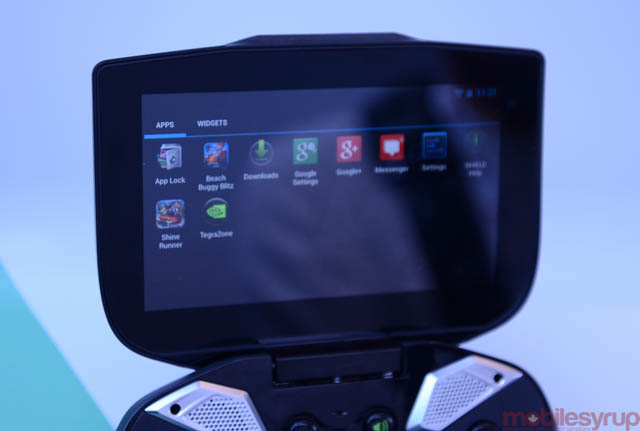
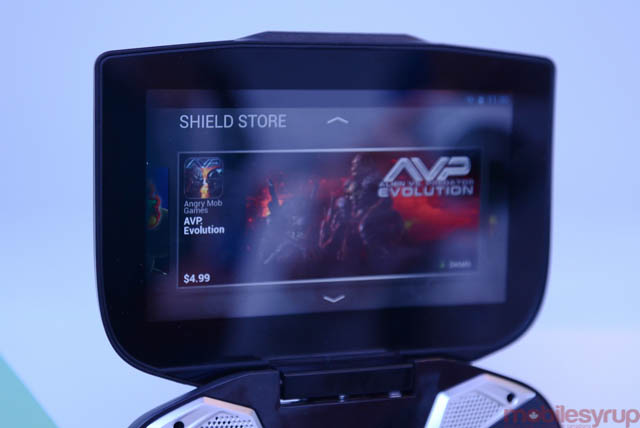
MobileSyrup may earn a commission from purchases made via our links, which helps fund the journalism we provide free on our website. These links do not influence our editorial content. Support us here.


